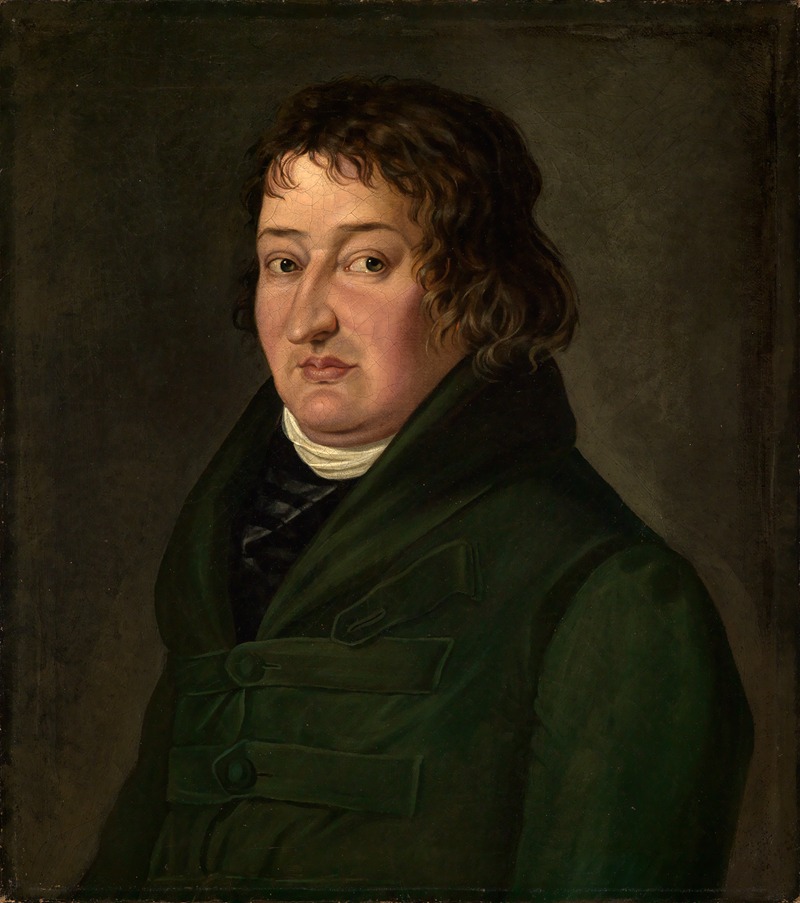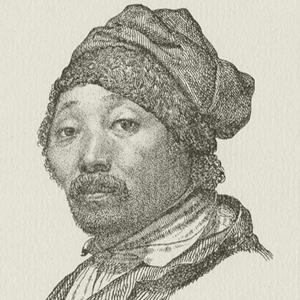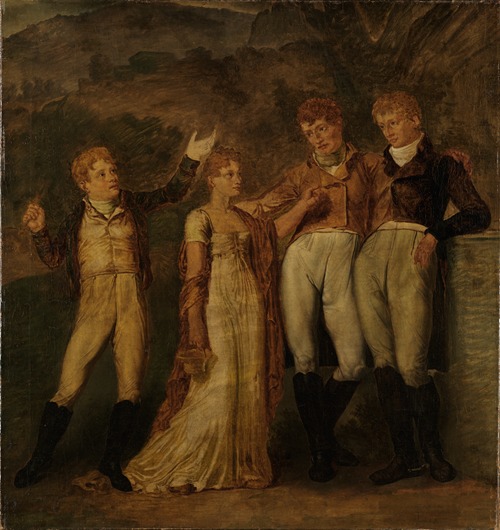

Feodor Iwanowitsch Kalmyk, was a Kalmyk painter and engraver. He called himself Feodor Ivannoff, and that is how he is listed in the Karlsruhe address books. He also signed his will under that name.
Kalmyk was probably born on the Kalmyk Khanate. When the Kalmyks returned to the old settlement area on the Altai, he was captured by the Cossacks in 1770 and brought as a serf to St. Petersburg at the Tsar's court of Catherine the Great. There he was baptized and given his name. In 1773, Catherine gave the page boy to the Landgravine Countess Palatine Caroline of Zweibrücken, who was visiting St. Petersburg. Thence, Feodor traveled with her to Darmstadt.
After the Landgravine's untimely death in March 1774, her daughter Friederike Amalie (1754–1832) took care of him. Feodor came to Karlsruhe on the occasion of her marriage to the Hereditary Prince of Baden Charles Louis (1755-1818), the eldest son of Margrave Charles Frederick of Baden (1728-1811). He received his education in Karlsruhe, and at the Philanthropinum Marschlins [de].
Feodor Ivannoff's artistic talent was soon recognized at the Karlsruhe court and he was trained by court painters Joseph Melling and Philipp Jakob Becker. The focus of his training was on drawing and copperplate engraving. Supported by recommendations from his teachers, Feodor Ivannoff was then able to go on a study trip to Italy. He used the nine years from 1791, which he spent mostly in Rome, to study classical antiquity and the great painters and sculptors of the Italian Renaissance, particularly Lorenzo Ghiberti, Michelangelo and Raphael.
Feodor Ivannoff created drawings and copperplate engravings from many ancient works. He was renowned for his precision and detailed reproduction. In 1800 he traveled with five other artists, including the Italian painter Giovanni Battista Lusieri (1755–1821) and the Italian architectural draftsman Sebastiano Ittar [it] (1768–1847), to Athens to work on behalf of Lord Elgin (1766–1841) to document the Acropolis and other ancient temples in pictures and to take plaster casts of figures and relief panels. Lord Elgin then went a step further and between 1801 and 1803 had large parts of the sculptural jewelry, the frieze and the metopes of the Parthenon, the so-called Elgin Marbles, shipped to London, removing about half of the surviving sculptures of the Parthenon, as well as sculptures from the Propylaea and Erechtheum, which earned him a lot of criticism during his lifetime.
In 1803 Feodor Ivannoff also traveled to London, where he was supposed to etch around 100 drawings made in Athens. This did not happen, however, since Lord Elgin was held for several years in France as Napoleon's prisoner of war on his way home. Feodor Ivannoff left London in 1805 and returned to Karlsruhe via Paris in 1806, where he was appointed court painter by Elector Karl Friedrich. As such, he was instrumental in the decoration of the Protestant Church of Karlsruhe [de]: he created a cycle of images from the life of Jesus, which was completed after his death by Franz Joseph Zoll.
Feodor Iwanowitsch Kalmyk died in Karlsruhe in 1832, at the age of about 65.
He was mainly a draftsman and portrait artist. He painted less often in oil. Influenced by the Zeitgeists and thanks to his long stay in Rome, he developed a preference for motifs from Greek and Roman antiquity as well as for religious themes from the Renaissance. Among other things, he created an eleven-part series of engravings from Lorenzo Ghiberti's bronze door to paradise at the Baptistery of Saint John in Florence. His Descent from the Cross (Kreuzabnahme) based on an ivory relief attributed to Michelangelo is also considered a successful example of his artistic work.
An illustrated book by Ivanoff with 12 copper engravings of the Florentine Gates of Paradise, published by the sculptor Heinrich Keller in Rome in 1798, was discussed in an episode of Lieb & Teuer [de] with Janin Ullmann. The episode was filmed in Reinbek Castle, and aired on February 5, 2017 on NDR.


